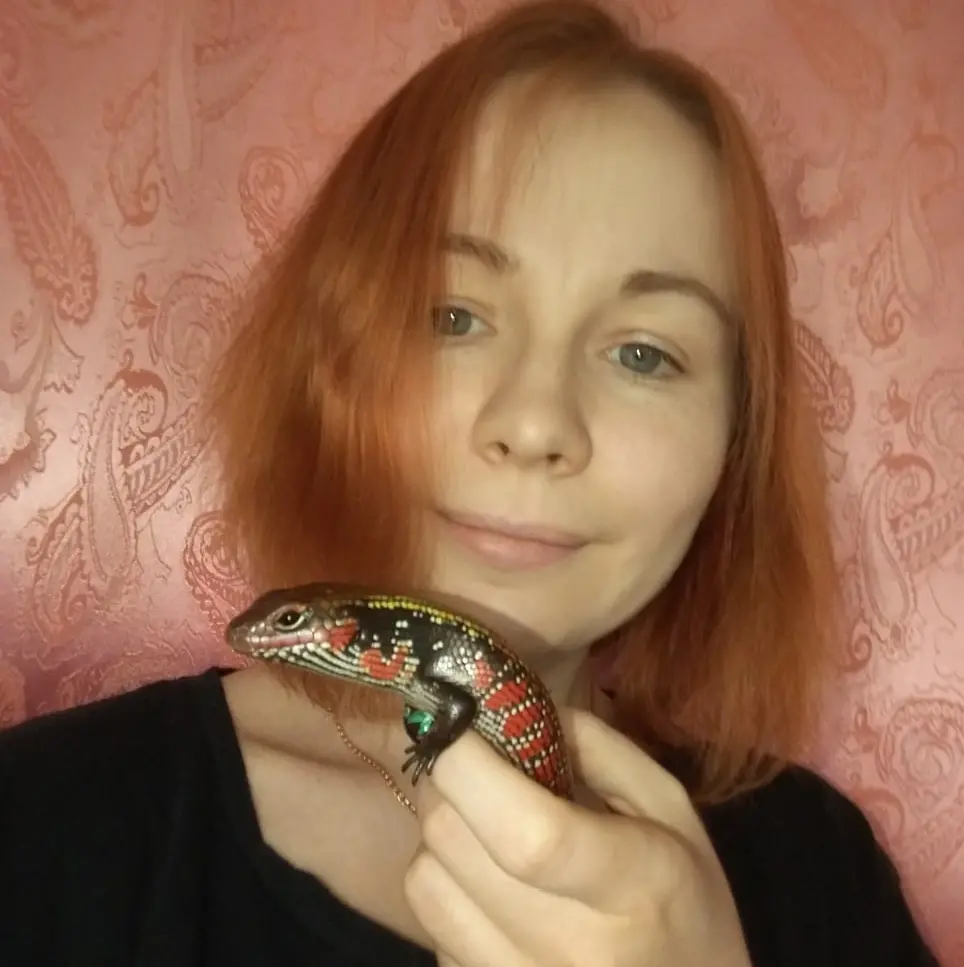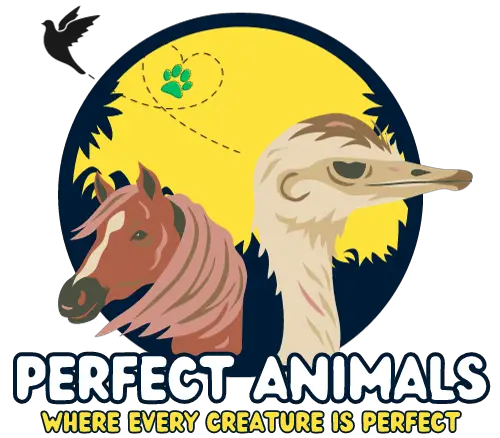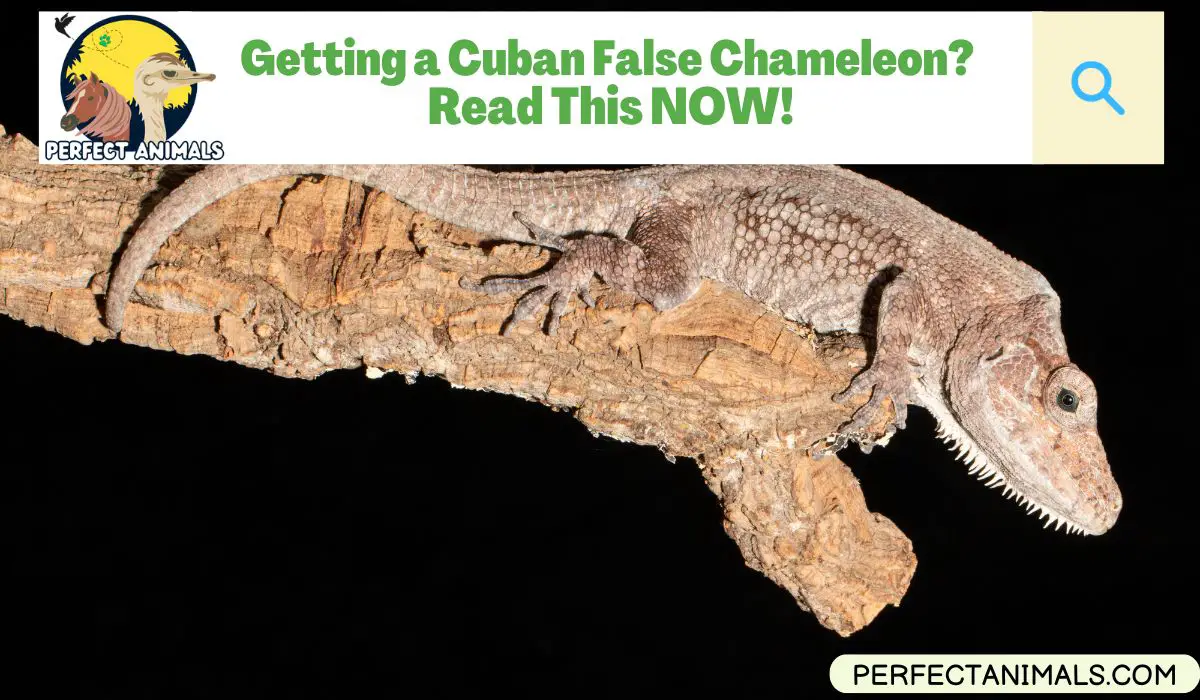The Cuban false chameleon is a fascinating lizard native to Cuba and the Isla de la Juventud.
Despite its name, the Cuban false chameleon is not a chameleon – it’s a type of anole lizard.
So why is it called a “false” chameleon? This lizard earned its misleading name from its ability to change color, blending in with its surroundings like a true chameleon.
In this article, we’ll uncover facts about the Cuban false chameleon’s appearance, habitat, diet, breeding, lifespan, and more.
We’ll answer questions like Do these lizards make good pets? How big of an enclosure do they need? And are they endangered in the wild?
Read on to get the full lowdown on the intriguing Cuban false chameleon!
Are Cuban False Chameleons Good Pets?
The Cuban false chameleon can make for an interesting and rewarding pet for the right owner.
These lizards are relatively small, maxing at around 15 inches long, so they don’t require massive enclosures.
Their small size also makes them a good option for people with limited space.
Cuban false chameleons are generally docile and tolerate human handling when cared for properly.
They aren’t quick to bite or act aggressively.
With regular gentle handling when young, false chameleons can become quite tame.
These lizards have specific care requirements that are important to research before bringing one home.
Like other tropical reptiles, they need warm temperatures, high humidity, UVB lighting, and an arboreal setup.
As long as their habitat needs are met, the Cuban false chameleon can be a truly enjoyable and interactive pet reptile.
Related Article – Bearded Dragon Tail Rot
Are Cuban False Chameleons Easy To Breed?
In my experience, Cuban false chameleons are relatively straightforward to breed in captivity.
These lizards ovulate automatically, so females can lay fertile eggs without the need for brumation or cycling like some other reptiles.
They will breed eagerly during any time of the year if you provide good conditions.
I’ve had success keeping a single male and female pair together in an adequately sized enclosure.
The male will pursue and mate with the receptive female.
You can also house one male with multiple females, as long as you provide enough space and resources to prevent conflict.
However, housing multiple males together is not recommended, as they are likely to fight over territory and females.
Breeding any animal is a serious commitment that requires proper planning and setup.
Once the female false chameleon lays her clutch of eggs, they need very specific incubation parameters to hatch successfully.
I incubate the eggs between 78-82°F in a humid incubator, and they typically hatch in 60-70 days.
Proper incubation is key for healthy babies.
While not overly complicated, breeding false chameleons does demand research and dedication.
With the right approach, these interesting lizards can be prolific and rewarding to breed in captivity.
You May Also Like – Scale Rot – Uncover the Deadly Truth
What Do Cuban False Chameleons Eat?
In the wild, Cuban false chameleons are opportunistic insectivores that will eat a variety of small invertebrates.
Their favored prey include roaches, crickets, grasshoppers, flies, beetles, caterpillars, spiders, and more.
They use their long sticky tongues to capture insects on branches and leaves.
In captivity, the diet of a Cuban false chameleon should replicate their diverse wild diet as much as possible.
A variety of appropriately sized feeder insects like crickets, roaches, moths, worms, and flies should form the basis of their diet.
These can be gut-loaded with nutrients before feeding for optimal nutrition.
False chameleons may also enjoy an occasional treat of berries, pollen, or greens, though insects should still make up the majority of their intake.
Variety is important to prevent them from becoming bored with any one food item.
Providing supplements like calcium and multivitamins helps round out the diet. With a diverse, nutrient-rich diet, Cuban false chameleons can thrive in captivity.
Monitoring their food intake and appetite levels is important to ensure proper health and growth.
How Big Of A Tank Does A Cuban False Chameleon Need?
As I mentioned earlier, Cuban false chameleons are relatively small lizards that max out around 15 inches long.
Given their petite size, they don’t require massive enclosures, but proper space is still important for their health and well-being.
For my Cuban false chameleons, I house each lizard singly in an 18″L x 18″W x 36″H glass terrarium.
This provides ample room for climbing and thermoregulating under the heat and UVB lamps.
While meeting the minimum recommendations, I still prefer to give them extra space whenever possible.
Larger enclosures allow them more opportunity to move around and exercise.
I’ve found the height of the terrarium to be particularly important, as these arboreal lizards appreciate tall branches and plants to climb on.
A height of at least 2 feet allows for sufficient vertical space.
Of course, glass walls allow for proper temperature and humidity maintenance too.
While they don’t need massive aviaries, giving Cuban false chameleons enough room to behave naturally is key.
I never house multiple males together, only one per enclosure.
With adequate space and enrichment, these little lizards thrive in captivity.
You May Also Like – Blue Eyed Leucistic Ball Pythons
How Long Do Cuban False Chameleons Live?
In my experience keeping and breeding Cuban false chameleons, their average lifespan in captivity ranges from 3-6 years.
However, with excellent care and husbandry, I’ve seen some individuals live even longer, reaching 8-15 years old.
From what I’ve observed, male Cuban false chameleons often outlive females by a few years.
Well-cared-for males can frequently reach ages of 8+ years in captivity.
Females seem to average about 5 years or so based on my breeding groups over the years.
Providing the proper environmental conditions, and nutrition, and limiting stress levels seem to be key to maximizing a Cuban false chameleon’s lifespan.
Males that are not constantly breeding tend to live longest, while frequent egg-laying takes a toll on females.
Maintaining their specialized care requirements and mimicking their natural habitat helps prevent early health issues.
With dedicated care, the Cuban false chameleon can be a long-lived pet reptile.
But even within optimal conditions, there is variation in individual lifespans.
Continuing research on improving husbandry and breeding practices will hopefully allow these intriguing lizards to live even longer in the future.
Do Cuban False Chameleons Change Color?
As their name implies, Cuban false chameleons do have the ability to change color, but not to the same extent as true chameleon species.
While they can’t instantly mimic their surroundings like a chameleon, false chameleons exhibit more subtle color shifts depending on temperature, stress level, and other factors.
In my observations, Cuban false chameleons display their brightest coloration when conditions are optimal.
When warm, relaxed, and exposed to UVB lighting, they will become vibrantly green with yellow, turquoise, and brown tones.
Their patterns and colors stand out the most when happy and healthy.
On the other hand, if a false chameleon gets too cold, becomes stressed, or feels threatened, its colors will dull and darken.
Grays, blacks, browns, and muted greens indicate the lizard feels uneasy with its environment.
Providing proper heating and humidity helps bring back their bright hues.
The changes are gradual, not instant like a true color-changing chameleon.
But the shifts still aid the Cuban false chameleon in limited camouflage and communication.
Even though they can’t match their surroundings, their coloring still allows them to display important signals related to their mood and well-being.
You May Also Like – Albino Ball Python
Are Cuban False Chameleons Endangered?
The Cuban false chameleon is currently not considered an endangered or threatened species.
Their conservation status is classified as “Least Concern” by the IUCN Red List. This indicates that Cuban false chameleon populations remain relatively stable and abundant in the wild overall.
In my research, I’ve found that Cuban false chameleons are still frequently encountered throughout their native range in Cuba and the Isla de la Juventud.
While not as common as some other Cuban anole species, healthy populations seem to persist, especially in forested areas.
False chameleons are protected under Cuban law from collection and export.
Several protected areas within their range conserve both the lizards and their habitat.
Ongoing conservation efforts help ensure Cuban false chameleons don’t require endangered categorization.
However, habitat loss remains a potential threat, as deforestation could reduce their numbers over time.
Monitoring wild populations and maintaining protected forests will be important for their continued success.
But for now, the Cuban false chameleon’s status appears secure in its island home.
With proper environmental stewardship, hopefully, this unique lizard can remain stable and thrive in the future.
You May Also Like – Turtles Without Shells
Final Thoughts
The Cuban false chameleon is truly a fascinating lizard. While not a true color-changing chameleon, it is nonetheless a beautiful and unique reptile.
As we’ve explored, false chameleons have specific care requirements related to diet, habitat, temperature, humidity, and more.
Providing for these needs takes dedicated research and effort on the owner’s part.
For the right individual who is prepared to give them what they need, the Cuban false chameleon can make for an enjoyable display animal.
Their small size and generally docile temperament make them manageable.
And their subtle color shifts and behaviors are interesting to observe over time.
Hopefully, this article has shed some light on the realities of false chameleon ownership – both the pleasures and responsibilities.
Their specialized needs mean they aren’t the right pet for everyone.
But in the proper hands, the Cuban false chameleon can thrive and delight reptile enthusiasts.
If you’re considering one of these false chams for yourself, be sure to continue seeking expert advice and resources to give them the best life possible.
FAQs
Do false chameleons eat their shed?
No, Cuban false chameleons do not typically eat their shed skin after molting. The shed skin is removed from the enclosure once observed.
Do Cuban false chameleons have teeth?
No, Cuban false chameleons do not have teeth. Like other lizards, they capture and swallow their insect prey whole.
Are false chameleons omnivores?
No, Cuban false chameleons are strictly insectivorous and carnivorous. They eat live insects and invertebrates.
Do false chameleons lay eggs?
Yes, female Cuban false chameleons lay clutches of 2-4 eggs which need to be incubated for proper development and hatching.
Resources – (for further reading)
Wikipedia – Anolis barbatus
Dubia.com – Cuban False Chameleon Care Sheet

Maya’s love for reptiles started in her teens with a pet snake. It grew into a collection of geckos, snakes, and more. She also cares for birds and cats, making a cozy home menagerie.

